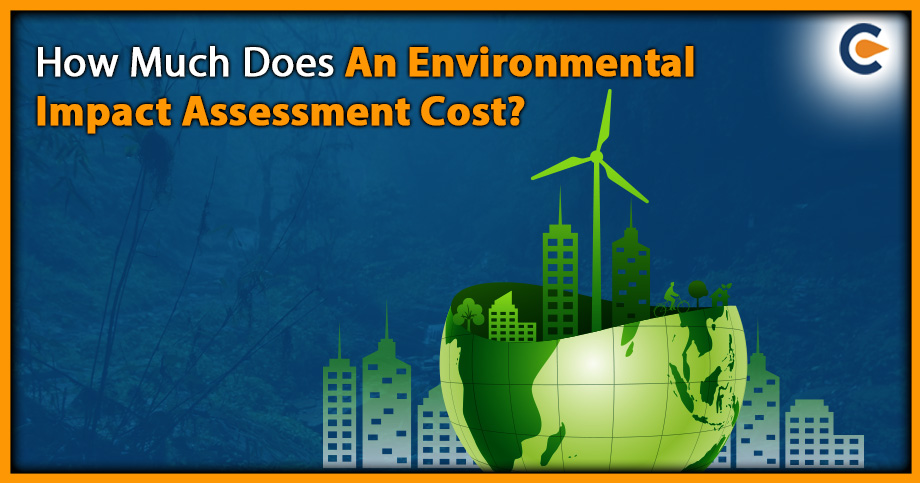The Environmental impact assessment cost for a proposed project can vary significantly depending on several factors, such as the type and scale of the project, the location and complexity of the project site, and the scope and depth of the assessment required. The cost of an EIA can also vary depending on the expertise and experience of the consultant or agency hired to conduct the assessment. In India, the cost of an EIA can range from a few lakhs to several crores of rupees, depending on the abovementioned factors. The environmental impact assessment cost may be lower for smaller projects, while more significant and complex projects may require a more extensive and costly assessment. It is important to note that the Environmental impact assessment cost is just one of the many costs associated with a proposed project. Proponents should consider the potential long-term costs and benefits of a project before deciding to proceed with it.
The Environmental impact assessment cost in India can vary depending on the project’s scope, size, and location. As per the notification issued by the MoEF&CC[1] in September 2020:
- Category A projects: Projects with potentially significant environmental impacts are classified as Category A. There are two category fees for conducting an EIA study for a Category A project, i.e. for projects with an investment of up to INR 50 crores and those with an investment above INR 50 crores.
- Category B projects: Projects with potential moderate environmental impacts are classified as Category B. There are again two category fees for conducting an EIA study for a Category B project with an investment of up to 10 crores and for those with an investment of above ten crores.
- Category B2 projects: Projects with potential minor environmental impacts are classified as Category B2. The fees for conducting an EIA study for a Category B2 project again divided in 2 categories i.e. projects with an investment up to INR 1 crore projects with an investment above INR 1 crore.
Steps in Conducting an EIA in India
In India, the EIA process involves several steps involving various subject experts and can dictate the environmental impact assessment cost. Therefore, only tested and certified must be followed to obtain clearance for a proposed project, and the Environmental impact assessment cost depends respectively. The steps involved in conducting an EIA in India are as follows:
- Screening: The first step is determining whether the proposed project falls under Category A or B as per the 2021 EIA notification. Category A projects require clearance from the National Board for Wildlife, the Coastal Zone Management Authority, or the Expert Appraisal Committee. In contrast, Category B projects require clearance from the State Environmental Impact Assessment Authority (SEIAA) or the State Expert Appraisal Committee (SEAC).
- Scoping: The next step is to identify the critical environmental and social issues associated with the proposed project, including potential impacts on the air, water, land, flora, fauna, and human health. This information is used to develop the EIA study’s Terms of Reference (TOR).
- Baseline Data Collection: The project’s proponent must collect data on the area’s existing environmental and socio-economic conditions. This includes data on air quality, water quality, soil quality, biodiversity, land use, demography, and other relevant factors.
- Impact Assessment: Based on the baseline data, the proponent must assess the potential environmental and social impacts of the proposed project, both positive and negative. The assessment must also identify these impacts’ likely magnitude, duration, and spatial extent.
- Mitigation Measures: Based on the impact assessment, the proponent must identify and evaluate measures to mitigate the potential negative impacts of the proposed project. These measures may include project design, technology, or operational procedure changes.
- Environmental Management Plan: The proponent must prepare an Environmental Management Plan (EMP) that outlines the measures to be taken during the project implementation and operation phases to minimize or eliminate potential environmental and social impacts.
- Public Consultation: The draft EIA report, including the EMP, is subject to public consultation. The public is given an opportunity to review the report and provide feedback and suggestions.
- Appraisal: The SEIAA or SEAC appraises the EIA report and takes a decision on whether to grant clearance to the proposed project, with or without conditions. In the case of Category A projects, the Expert Appraisal Committee appraises the EIA report.
- Monitoring: The proponent is required to implement the EMP and monitor the environmental and social impacts of the project during the implementation and operation phases. The monitoring reports are submitted to the regulatory authorities regularly.
It is important to note that the EIA process in India is subject to ongoing debate and criticism, with concerns raised about the effectiveness of the process in identifying and mitigating potential environmental and social impacts. Therefore, Environmental impact assessment cost can, however be an important factor. A solid EIA report prepared in a cost-effective manner with the help of leading NABET/QCI accredited experts can help reduce the chances of refusal at the various stages mentioned above.
Regulations Governing EIA in India
The Environmental Impact Assessment process in India is governed by a set of regulations that provide guidelines for conducting an EIA for proposed developmental projects. The key rules involving EIA in India are as follows:
- The Environment (P) Act, 1986: This Act provides the legal framework for environmental protection in India and establishes the National Environment Policy. The Act also establishes the Ministry of Environment, Forest, and Climate Change (MoEFCC), which enforces environmental regulations, including the EIA process.
- The EIA Notification, 2021: This notification replaces the previous EIA notification of 2006 and sets out the procedures for conducting an EIA in India. The notification outlines the categories of projects that require clearance from the regulatory authorities, the process for conducting an EIA, and the requirements for public consultation.
- The Forest (Conservation) Act, 1980: This Act provides for the conservation of forests and wildlife in India and requires clearance from the National Board for Wildlife for projects that may affect forest land or wildlife habitats.
- The Coastal Regulation Zone (CRZ) Notification, 2011: This notification regulates development activities in the coastal zone and requires clearance from the Coastal Zone Management Authority for projects that may affect the coastal area.
- The Water (P&CP) Act, 1974: This Act provides for the prevention and control of water pollution and requires clearance from the State Pollution Control Board for projects that may affect water quality.
- The Air (P&CP) Act, 1981, provides for the prevention and control of air pollution and requires clearance from the State Pollution Control Board for projects that may affect air quality.
- The National Green Tribunal (NGT): The NGT is a specialized court that hears cases related to environmental protection and enforcement of environmental regulations, including the EIA process.
Conclusion
As we can see, the environmental impact assessment cost depends on various factors that lead to the identification, prediction, and evaluation of a project’s potential impacts on the environment and recommend appropriate mitigation measures to minimize or avoid those impacts. EIA is a complex and multifaceted process involving stakeholders’ participation, including project proponents, environmental experts, regulatory agencies, and the public. A well-designed EIA process can ensure that environmental concerns are addressed and the proposed project’s impacts are minimized. EIA has become an essential tool in environmental decision-making globally and is a legal requirement in many countries, including India. Therefore, it is always recommended to take the assistance of experts while conducting an Environmental Impact Assessment to clarify the cost structure and implement a practical Environment Impact Assessment.
Also Read:
How To Carry Out EIA For Prior Environmental Clearance?
How To Obtain Environmental Clearance For Cement Plants?
How To Obtain Environmental Clearance For Highway Projects?











